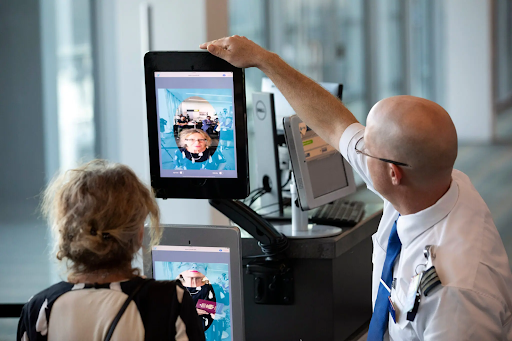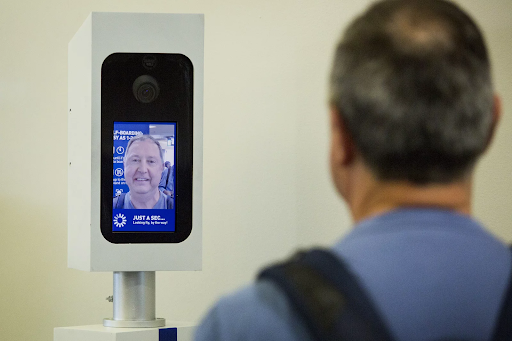
Apr
The Future of Airport Security: Facial Recognition Takes Places in Schiphol Airport
Facial recognition technology is gaining traction in the aviation industry as airports strive to enhance the passenger experience by creating a smoother and more seamless journey. By leveraging biometric data, this technology allows passengers to navigate through the airport without the need to present their passport or boarding pass. While facial recognition holds great potential, concerns regarding privacy and data security must be addressed to ensure the responsible and ethical use of this technology.
Amsterdam’s Schiphol airport is currently conducting trials of facial recognition technology to simplify the airport process for passengers. During check-in, passengers can opt-in to the facial recognition system by having their photo taken at a self-service kiosk. This photo is securely stored and subsequently used to verify their identity at various checkpoints throughout the airport, including security and boarding gates. The aim is to expedite the process and provide a more efficient and convenient travel experience. Wilma van Dijk, Schiphol’s Safety and Security Director, mentioned with the aid of facial recognition technology passengers can “leave (their) passport and boarding pass in the bag” in the future to create a more hassle-free travelling experience.
While facial recognition technology offers significant benefits, it has sparked concerns about privacy and data protection. For instance, MacKenzie Fegan, an airline passenger travelling to Mexico from the United States tweeted her concerns about privacy, confidentiality, data security as well as a lack of consent when it came to biometrics technology. She even mentioned and questioned JetBlue flights regarding their boarding procedures in her tweet as she did not consent to a facial recognition scan. In an interview with CNN Travel, she expressed her surprise and confusion about the entire ordeal. Her tweet also became viral and sparked controversies regarding the pros and cons of the use of technology in airports and security.
No doubt, facial recognition technology offers the potential to streamline processes, reduce waiting times, and enhance security measures. However, it is crucial to strike a balance between convenience and privacy concerns. Airlines and airports must prioritise transparency, clearly communicate the use of facial recognition technology, and provide passengers with the option to opt-out if they prefer not to participate. This proactive approach ensures that passengers feel comfortable and have control over their personal data.

Source: NPR
The adoption of facial recognition technology requires collaboration between various stakeholders. The Dutch Government, Amsterdam Airport Schiphol, Cathay Pacific, KLM, and Vision-Box have formed a partnership to develop and implement the Seamless Flow program. This program aims to modernize the airport landscape, simplify processes, and deliver enhanced value to passengers. By working together, these organizations are shaping the future of air travel and reshaping how passengers move through airports.
Facial recognition technology holds great promise in transforming the airport experience, offering faster and more efficient processes for passengers. By leveraging biometric data, airports can streamline check-in, security, and boarding procedures, creating a seamless journey for travelers. However, it is crucial to address privacy and data security concerns to ensure the responsible use of this technology. By maintaining transparency, prioritizing passenger consent, and implementing robust security measures, the aviation industry can unlock the full potential of facial recognition technology while safeguarding passengers’ privacy and data.
Done by: Rejina Khar, Zarif Ong & Elly Ken
Source: edenspiekermann, The New York Times, NPR, International Airport Review, CNN Travel & MacKenzie Fegan tweet

